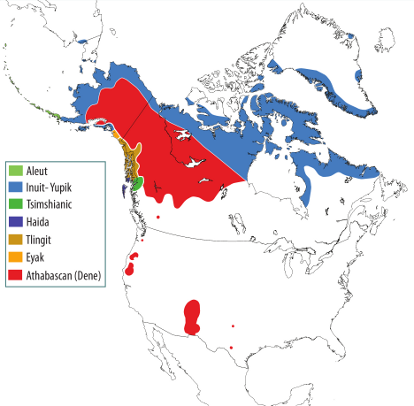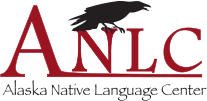This map shows the indigenous language regions of Alaska. Related languages of neighboring Canada and Russia are also shown. The language boundaries represent traditional territories at approximately 1900, though some shifts in language boundaries have occurred since that time. Boundaries are defined based on the similarity of sound systems and the ability of speakers from different regions to understand each other.
The colors of the individual languages reflect their classification into language families, each of which share a common ancestral language. Eighteen of the twenty indigenous Alaska languages on this map belong to either the Eskimo-Aleut or the Athabascan-Eyak-Tlingit families. Tsimshian is a member of the small Tsimshianic family, while Haida is an isolate, not demonstrably related to any other language in the world.
The language names appearing on this map are the English names generally accepted by most speakers today. Alternate names are listed in the legend. A selection of modern and historic indigenous villages are labeled with both indigenous and English names, as are major rivers, lakes, and islands. A comprehensive inventory of indigenous place names, including village sites and geographic features, would number in the tens of thousands.
As of 2010 few indigenous languages in Alaska are still spoken by children, but significant revitalization programs exist for some languages.
Although based largely, including language definitions, boundaries, and insets, on Michael Krauss's 1974 and 1982 Native Peoples and Languages of Alaska map, this map differs in several ways from that map. This map does not indicate indigenous populations or speaker numbers; language status in each village or size of village; and dialect boundaries. Finally, several language names have been revised to reflect current usage.
Show more...





